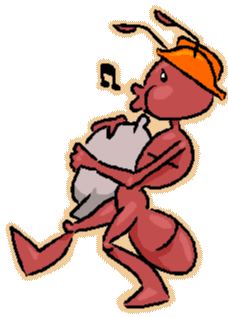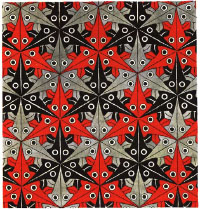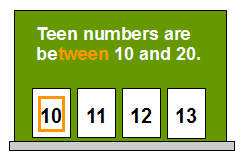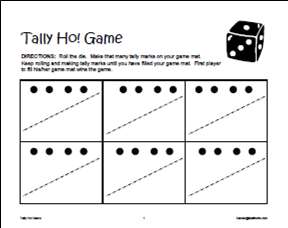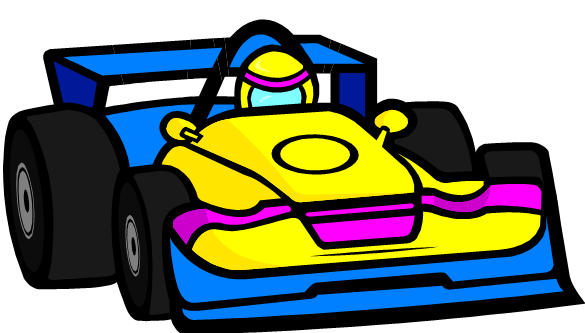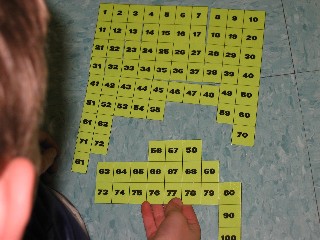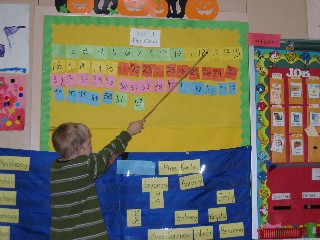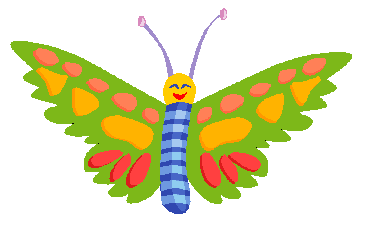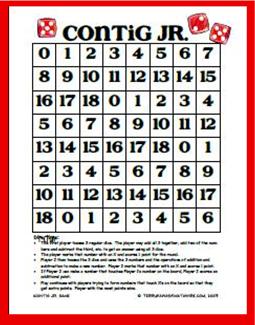- Ants Marching assesses student understanding of the concept of multiplication as arrays.
- Third Grade Parade also assesses student understanding of the concept of multiplication as arrays.
- Cheerleader Competition was designed to assess student understanding of multiplication as an array.

Tuesday, May 31, 2011
Problem Solving: Multiplication Arrays
Arrays are one graphical representation of multiplication that students must understand. These problems were created to provide practice in creating arrays.
Wednesday, May 25, 2011
Online Resource: Probability Spinners
Math Playground: Spinner
This online site allows users to customize a spinner by colors, then spin for trials. There is a graph option to display the results by color as they are generated. This is an effective online resource for data collection. Students may easily generate data from larger trials than through the use of a real spinner.
Many teachers use this kind of online generator after student's initial experience with classroom spinners and discussion of the resulting data from this small trial. Students generate hypotheses which may be easily investigated using this online resource to capture more data. A resulting data analysis confirms or disputes the hypotheses and should include a discussion of the use of online generators and randomness.
Note: This site allows the user to customize the spinner by adding labels to each section (e.g. numbers, names, etc.) and to select how many different outcomes there will be.
Check out Math Playground's Probability Spinner.
This online site allows users to customize a spinner by colors, then spin for trials. There is a graph option to display the results by color as they are generated. This is an effective online resource for data collection. Students may easily generate data from larger trials than through the use of a real spinner.
Many teachers use this kind of online generator after student's initial experience with classroom spinners and discussion of the resulting data from this small trial. Students generate hypotheses which may be easily investigated using this online resource to capture more data. A resulting data analysis confirms or disputes the hypotheses and should include a discussion of the use of online generators and randomness.
Note: This site allows the user to customize the spinner by adding labels to each section (e.g. numbers, names, etc.) and to select how many different outcomes there will be.
Check out Math Playground's Probability Spinner.
Labels:
data analysis,
data collection,
online generator,
probability,
spinner
Tuesday, May 24, 2011
Tessellations: Online Resources
Tessellations.org: Check out Tessellations.org for additional information on creating tessellations. Be sure to visit the online galleries to view Escher-like tessellating pieces designed by students. The site also hosts several different methods for creating these tessellating pieces.
Bookmark this online tessellation site as a wonderful resource for your tessellation unit. It would be a great introduction to an Escher unit as well.
M.C. Escher Official Website: http://www.mcescher.com/
Tessellation World of Makoto Nakamura: this artist creates colorful Escher-like tessellations, then animates many of them. This is an incredible site not to be missed in any discussion of Escher and Escher-like tessellations. Check out this Tessellation World for great inspiration. You'll be astounded at both the art and the mathematics inherent in these designs.
Bookmark this online tessellation site as a wonderful resource for your tessellation unit. It would be a great introduction to an Escher unit as well.
M.C. Escher Official Website: http://www.mcescher.com/
Tessellation World of Makoto Nakamura: this artist creates colorful Escher-like tessellations, then animates many of them. This is an incredible site not to be missed in any discussion of Escher and Escher-like tessellations. Check out this Tessellation World for great inspiration. You'll be astounded at both the art and the mathematics inherent in these designs.
Monday, May 23, 2011
Creating Original Escher-Type Tessellations
These directions support students as they create tessellating pieces that slide to tessellate the page. Creating the tessellating piece is the easy part of this activity. Students traditionally have a tougher time deciding what their creation can be. Use the suggested ideas to help students develop an Escher eye for form.
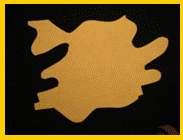 Help students Develop Escher Eyes to identify the hidden creature(s) in their tessellating pieces. Remember days of cloud watching where you tried to find shapes in clouds? Replicate this experience by placing the cut-out tessellation pieces on an overhead and rotating or flipping them to encourage students to think outside the box and identify many possibilities for their original form. This is an excellent introductory activity before students create their own Escher-type tessellations as it helps students see the possibilities in their own shapes. Project the images so that the whole class can brainstorm together! Encourage students to go for quantity as they try to see many different possibilities in the same shape.
Help students Develop Escher Eyes to identify the hidden creature(s) in their tessellating pieces. Remember days of cloud watching where you tried to find shapes in clouds? Replicate this experience by placing the cut-out tessellation pieces on an overhead and rotating or flipping them to encourage students to think outside the box and identify many possibilities for their original form. This is an excellent introductory activity before students create their own Escher-type tessellations as it helps students see the possibilities in their own shapes. Project the images so that the whole class can brainstorm together! Encourage students to go for quantity as they try to see many different possibilities in the same shape. 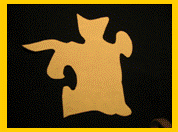 See Directions for creating an Escher-type tesselation. The original PowerPoint file was converted to PDF format for easy viewing. Teachers may use this document to lead students step-by-step through creating their own original tessellating pieces.
See Directions for creating an Escher-type tesselation. The original PowerPoint file was converted to PDF format for easy viewing. Teachers may use this document to lead students step-by-step through creating their own original tessellating pieces. Read more about tessellations on Mathwire.com, including a collection of links to tessellation art and activities available on the internet.
Wednesday, May 18, 2011
Problem Solving: Number Patterns
Mathematics is full of patterns and mathematicians analyze data, searching for patterns that will allow them to draw conclusions and make hypotheses.
These problems were specifically designed to reinforce common mathematical patterns. Some patterns are easily identified. Others are best solved using an input/output table to collect and analyze mathematical patterns.
Grades 1-2:
These problems were specifically designed to reinforce common mathematical patterns. Some patterns are easily identified. Others are best solved using an input/output table to collect and analyze mathematical patterns.
Grades 1-2:
- Bay Street requires students to analyze the pattern of house numbers on Bay Street. Students write down the pattern they see and use this number pattern to write in the missing house numbers.
- King Street requires students to analyze the pattern of house numbers on King Street. Students write down the pattern they see and use this number pattern to write in the missing house numbers.
- Baseball Season is a pattern problem that can be easily solved using a table of values.
- Anthony's Allowance provides additional pattern practice.
Tuesday, May 17, 2011
Intervention Strategies: Teen Numbers
It is very common for young students to have difficulty with the numbers 11- 19. Their names do not follow the common rule and they are the sight words/ numbers of mathematics. Teachers must ACTIVELY help students develop meaning for both the words and the corresponding numerals. It may help to emphasize that the teen numbers are between 10 and 20.
Do some informal assessment to decide where to begin on this continuum:
Rote Counting:
- Identify the student's comfort zone: add 1-2 numbers at a time to the 1-10 sequence until the student can reliably count on using the correct names.
- Sing songs and extend counting songs: for example, Ten Little Indians can be modified and extended to be 11 little, 12 little, 13 little teddy bears (or dinosaurs or valentines, etc.). Singing is great reinforcement for many students and helps them acquire fluency with these extended numbers more easily than simply counting aloud. [Think about the A-B-C song for learning the alphabet.]
- Who Has The Number?: Give students the large demo-size cards (#10-20) and have them hold up the cards as you sing the song so that students hear and see the numbers.
- Teen Line-up: distribute the large demo-size cards (#10-20) and ask students to line up in the correct order. NOTE: numbers 10 and 20 of the teen demo cards are boxed in bright orange [see picture above] to visually reinforce the notion that the teen numbers are between 10 and 20. Reinforce this notion often when working with the teen demo cards.
- Build the Hundred Board: students need to build the hundred board by placing the numbers or tiles in the correct order. Again, build slowly by varying the number of tiles the student uses to match the individual comfort zone of each student. Alternatively, print out small number cards, attach magnetic tape, and use metal surfaces such as heaters, sides of file cabinets or cookie sheets so that students can build the hundred chart with these number cards.
- Classroom Applications: Have student perform classroom duties which support the development of one-to-one correspondence: attendance head count, passing out/collecting papers, paper plates, napkins, etc.
Monday, May 16, 2011
Tally Ho! Game
This game was created to help kindergarten students learn to use tally marks to count. The game mat was specially designed to support young learners who must master the skill of tally counting.
Tally marks are made in groups of five (four upright and the fifth goes across the four) for easy counting. The game mat has four dots to prompt students to mark four upright tallies. Then the dotted line prompts students to close the gate by drawing the fifth tally across the group of four, Finally, each group of five is in its own box.
Now, students practice making tally marks in a game format. They roll a die and add that many tally marks to their game mat. For ease of use, place the Tally Ho! game mat in a sheet protector and use dry erase pens to make the tally marks. They are easily erased to play again.
Differentiation: Use this dot and dashed line approach as an accommodation for students having difficulty making tally marks correctly in groups of five in classroom activities.
Tally marks are made in groups of five (four upright and the fifth goes across the four) for easy counting. The game mat has four dots to prompt students to mark four upright tallies. Then the dotted line prompts students to close the gate by drawing the fifth tally across the group of four, Finally, each group of five is in its own box.
Now, students practice making tally marks in a game format. They roll a die and add that many tally marks to their game mat. For ease of use, place the Tally Ho! game mat in a sheet protector and use dry erase pens to make the tally marks. They are easily erased to play again.
- Download the Tally Ho! game mat.
Differentiation: Use this dot and dashed line approach as an accommodation for students having difficulty making tally marks correctly in groups of five in classroom activities.
Friday, May 13, 2011
Counting Game: Car Race
In the counting game, Car Race, students toss a die and move cars that many spaces. First player to cross the finish line wins the game. This is a simple counting game that reinforces counting 1-6 spaces and one-to-one correspondence.
- Download the directions, game mat and center icons for Car Race.
- The game mat is printed in 3 sections which should be taped together.
- Students enjoy using small cars as their game pieces.
- NOTE: This game was developed by a Monmouth University student for the Probability Fair.
Thursday, May 12, 2011
Hundred Board Puzzles
The hundred board or chart holds a prominent place in primary math classrooms. The chart is a visual representation of the patterns in our mathematical system of numbers.
Students are able to learn the patterns in the hundred board by assembling puzzles. Teachers are able to assess student use of patterns in rows and columns by observing the student at work.
Differentiation:
This task is easily differentiated to accommodate the varied levels in a first grade class by changing the number of pieces and the shape of the pieces. Puzzle bags should be sequentially lettered so that students progress through harder versions of the task.
Extensions:
- Have students and their families create their own hundred board puzzles.
- Challenge students to fill in missing numbers on hundred board pieces or whole hundred boards as practice using the patterns in the hundred board.
- Download a hundred board template.
Wednesday, May 11, 2011
Active Participation: Let Go and Let Students...
This phrase reminds teachers to put students in charge of their learning and in charge of explaining themselves. This practice incorporates multiple effective strategies to support student learning:
- Give students the chalk or marker and ask them to come to the board or overhead to explain their thinking. Resist asking students to tell you what they did while you write what they did. Asking students to write as they explain allows them to organize their thinking and provides insight to teachers about what strategies and organizational methods students use effectively and independently. This strategy also provides practice for the expected independent test performance.
- Ask another student to repeat a student's explanation or insight. Resist the urge to repeat or paraphrase each student's response. Ask classmates to do this instead, fostering active participation/listening skills in all students.
- Ask students to read directions or problems aloud rather than reading them yourself. Once again, this practice encourages students to develop effective reading skills for math activities and tests. If reading levels are an issue in your classroom, you might begin with buddy reading, pairing students to effectively mitigate this issue.
- Ask students to define math vocabulary terms in their own words. Post the best definitions around the room.
- Post samples of effective problem-solving solutions that meet tough requirements of the problem-solving rubric you use to grade student responses. Make overheads of student samples and review them regularly so that all students see examples of effective ways to organize solutions and explain thinking.
- Expect students to be capable of some independent work. Voice this expectation to students as in "I want to see how each of you does on Math Boxes #3 and #4 today, so please begin with those boxes. I believe that everyone can do these by themselves and I will be around to check. After you finish these two math boxes, you may do the others in any order you choose."
- Quickly spin off students who are capable of independent work. Provide enrichment activities that go beyond current grade-level expectations and require higher-order thinking skills for solutions. Encourage these students to play harder versions of math games (i.e. more cards, larger numbers, etc.)
- Differentiate and scaffold instruction to effectively meet the varied needs of learners in your classroom. Provide enrichment activities for talented students while you work with small groups who need additional instruction or scaffolded support/encouragement during independent practice. Use flexible grouping based on informal assessment of student responses during instruction.
- Download Active Participation Strategies for Math Classes: a one-page text-only summary of the strategies discussed above
- Download Active Participation Strategies for Math Classes: the full text of this section with pictures
Monday, May 9, 2011
Hidden Butterfly
Sneak Preview
A new Butterfly Themed Math Activities is under development at Mathwire.com. Here's a sneak peak at one of the new activities.
Hidden Butterfly challenges students to use the clues provided to figure out which number the butterfly has hidden behind. Students read each clue and eliminate the numbers that don't fit, crossing them off on the number grid. They continue clue by clue until only one number remains.
A new Butterfly Themed Math Activities is under development at Mathwire.com. Here's a sneak peak at one of the new activities.
Hidden Butterfly challenges students to use the clues provided to figure out which number the butterfly has hidden behind. Students read each clue and eliminate the numbers that don't fit, crossing them off on the number grid. They continue clue by clue until only one number remains.
- Download the Hidden Butterfly PDF document which includes 6 logic problems, answer key and a blank template for students to create their own Hidden Butterfly logic problems to challenge their classmates.
Wednesday, May 4, 2011
Active Participation Strategy: Show Me The Answer
Look for opportunities to incorporate visual components into student responses. For example:
- Use student digit cards to have students form the largest or smallest number from those digits. Or dictate a number and have students form the number using their digit cards. The teacher may then ask students to hold up the digit in the hundreds place or in the ten-thousands place. See More Place Value Activities for additional suggestions.
- Give students small response cards: even/odd, prime/composite, yes/no, area/perimeter and ask students to hold up the correct card to respond to questions.
Tuesday, May 3, 2011
Math Competitions
The end of the school year is a great time to try out new activities and strategies. Your students are accustomed to your procedures and expectations. Teachers are able to get immediate feedback on these activities, then tweak them to best fit the needs of students in the class. Then, the activities are ready for immediate implementation in the fall.
These activities are also well-suited to use during the end of the school year when schedules often become chaotic with students missing class for assemblies, choral practice, field trips, etc. The games accommodate varied number of students and may easily be implemented by substitute teachers or used in combined classes.
See the new May 2011 issue of Mathwire for specific information on these games and suggestions for implementing grade level competitions as a way to motivate students to master basic facts and develop number sense.
These activities are also well-suited to use during the end of the school year when schedules often become chaotic with students missing class for assemblies, choral practice, field trips, etc. The games accommodate varied number of students and may easily be implemented by substitute teachers or used in combined classes.
See the new May 2011 issue of Mathwire for specific information on these games and suggestions for implementing grade level competitions as a way to motivate students to master basic facts and develop number sense.
Monday, May 2, 2011
Thirteen Ways of Looking at a Half
This online Cyberchase activity challenges students to find the 13 different ways to shade in the figure to show one-half.
- Download a Thirteen Ways recording sheet so that students can shade in their solutions to find all 13 before entering them into the computer.
- Visit the Thirteen Ways of Looking at a Half website to enter all of the one-half shaded solutions you found.
Subscribe to:
Posts (Atom)
